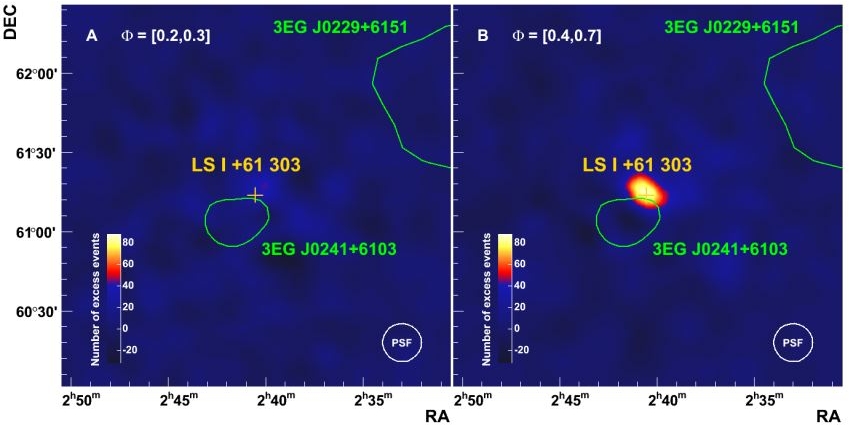
 Credit:MAGIC Collaboration
Credit:MAGIC Collaboration
Could this be Magic?
Microquasars are objects within our galaxy which behave like active galaxies - they are accreting sources and have variable jets. As such studying these nearby sources help astronomers understand the physical processes going on in active galaxies. The image above is a gamma-ray map of the microquasar LSI +61 303 obtained by the MAGIC telescope. This binary system is composed of an ordinary massive star with a compact object (probably a neutron star) orbiting around every 26 days, and displaying jets of particles accelerated to close the speed of light. At periastron passage (on the left), the microquasar is quiet. However, about one third of the orbit later (on the right) gamma rays above 400 GeV comming from LSI +61 303 are detected at a rate of 16% of that observed for the Crab Nebula. The same pattern seems to happen every orbital cycle, and astronomers would like to know why.
<
HEA Dictionary ● Archive
● Search HEAPOW
● Other Languages
● HEAPOW on Facebook
● Download all Images
● Education ● HEAD
>
Each week the HEASARC
brings you new, exciting and beautiful images from X-ray and Gamma ray
astronomy. Check back each week and be sure to check out the HEAPOW archive!
Page Author: Dr. Michael F. Corcoran
Last modified Monday, 26-Feb-2024 17:22:16 EST


